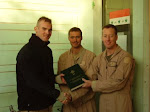Many Catholics have had an up-close and personal experience of the rejection of many elements of Catholic faith, life, and worship dating to the time before the convening of the Second Vatican Council.
Some probably remember very well the felling of altar rails, the dumpsters full of precious vestments and their replacement with polyester ponchos, the churches re-decorated with cheap paneling and orange shag carpeting, the rejection of organ music in favor only of guitar tunes. Phrases such as "pre-Vatican II" uttered with contempt also stem from an erroneous idea that the Council mandated a break within the Church from all that came before it.
These were some of the more obvious signs of a rupture within the Church from her magnificent and sacred past. But the physical aspects of the Church's life are only indicators of something far more profound and vital: the state of faith in the Church's members. We are saved by grace through faith. Just as a doctor must assess the patient's vital signs before determining their state of health, so must the visible manifestation of the Church's life be seen always as an indicator of the vibrancy of Christ's ongoing work of salvation in His Mystical Body on earth.
Every person who has had this experience probably has a unique name for the phenomenon but the appellation "hermeneutic of rupture" has arisen as the predominant way of describing what for some has been a very distressing development. In the face of this unprecedented phenomenon in Catholic life some are indifferent and some approve, but there are also some who have not found the rupture helpful. There is a desire on the part of many priests, including our Holy Father, to make this third group feel loved and at home in the universal Church of Christ, the sole Savior of the human race. As well, the idea that the Church would break from her past, particularly in the area of the sacred liturgy which has always been a spiritual reality of consistent organic development from the time Our Lord Himself instituted the Holy Sacrifice at the Last Supper, is an innovation which some might term illegitimate.
The movement within the Church to read and implement the documents and teachings of Vatican II in continuity with the whole of our Catholic tradition has come to be called "the hermeneutic of continuity". There is a blog by this very name and which is dedicated to furthering our Holy Father Benedict's efforts in this area of renewal for Catholic faith, life and worship.
From that blog I offer the following information for those who are unfamiliar with this concept.
Pope Benedict XVI on the hermeneutic of continuity
The title for this blog is inspired by an expression of Pope Benedict XVI in his address to the Roman Curia on 22 December 2005. In order to give the context, here is a quotation:
The last event of this year on which I wish to reflect here is the celebration of the conclusion of the Second Vatican Council 40 years ago. This memory prompts the question: What has been the result of the Council? Was it well received? What, in the acceptance of the Council, was good and what was inadequate or mistaken? What still remains to be done? No one can deny that in vast areas of the Church the implementation of the Council has been somewhat difficult, even without wishing to apply to what occurred in these years the description that St Basil, the great Doctor of the Church, made of the Church's situation after the Council of Nicea: he compares her situation to a naval battle in the darkness of the storm, saying among other things: "The raucous shouting of those who through disagreement rise up against one another, the incomprehensible chatter, the confused din of uninterrupted clamouring, has now filled almost the whole of the Church, falsifying through excess or failure the right doctrine of the faith..." (De Spiritu Sancto, XXX, 77; PG 32, 213 A; SCh 17 ff., p. 524).
We do not want to apply precisely this dramatic description to the situation of the post-conciliar period, yet something from all that occurred is nevertheless reflected in it. The question arises: Why has the implementation of the Council, in large parts of the Church, thus far been so difficult?
Well, it all depends on the correct interpretation of the Council or - as we would say today - on its proper hermeneutics, the correct key to its interpretation and application. The problems in its implementation arose from the fact that two contrary hermeneutics came face to face and quarrelled with each other. One caused confusion, the other, silently but more and more visibly, bore and is bearing fruit.
Part II next week.
With thanks to the blog The Hermeneutic of Continuity where you can read the entire address by Benedict XVI on the subject.
A Recipe for Readiness – A Homily for the First Sunday of Advent
-
The first weeks of Advent focus more on the Lord’s second coming in glory
than on His first coming at Bethlehem. The gospel clearly states that we
must a...
5 days ago











No comments:
Post a Comment